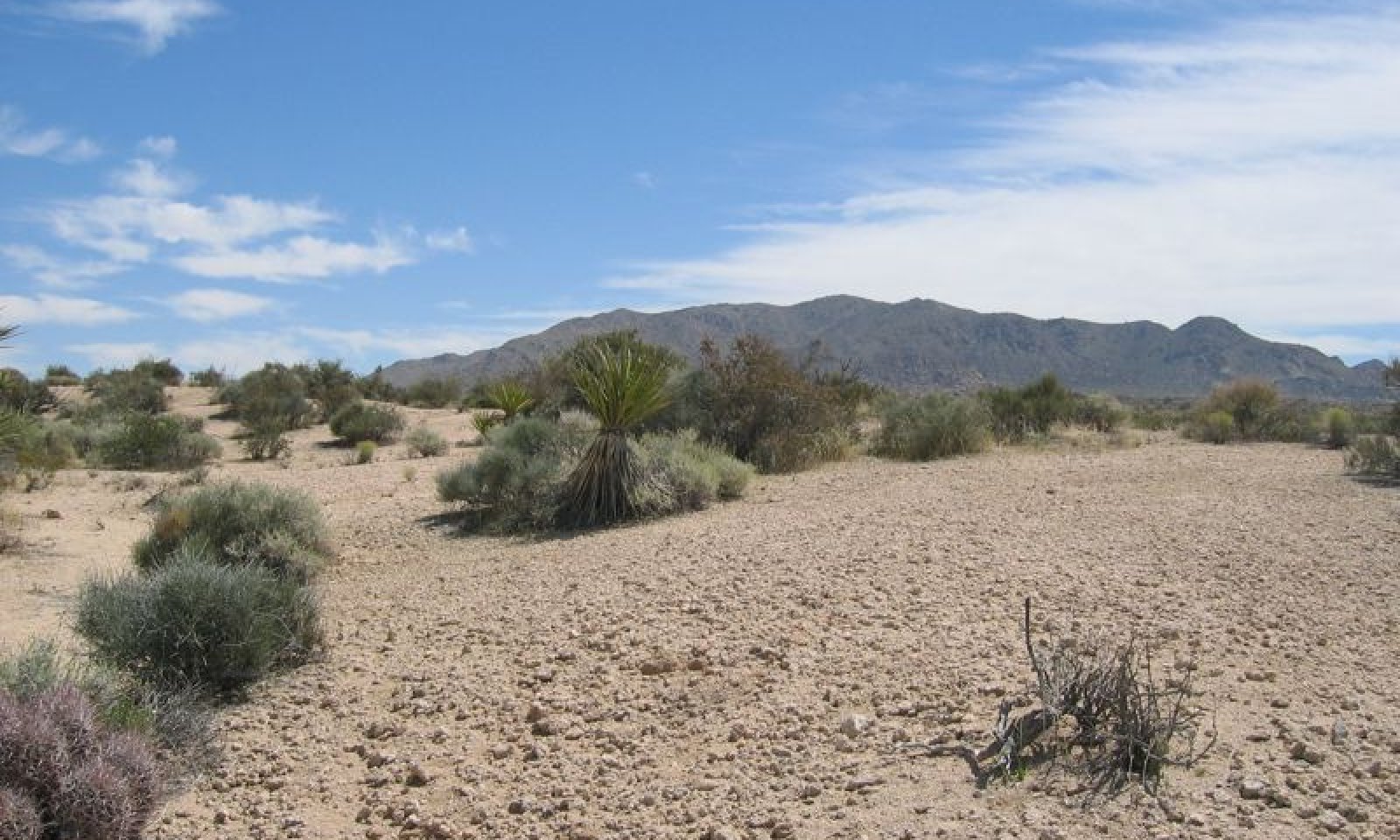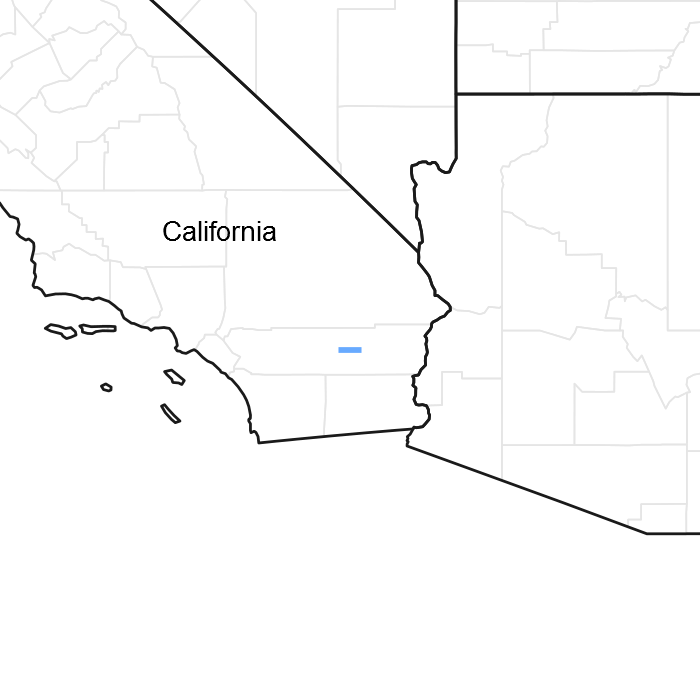

Natural Resources
Conservation Service
Ecological site R030XB220CA
Very Shallow Duripan Fan Remnants
Accessed: 12/20/2025
General information
Provisional. A provisional ecological site description has undergone quality control and quality assurance review. It contains a working state and transition model and enough information to identify the ecological site.

Figure 1. Mapped extent
Areas shown in blue indicate the maximum mapped extent of this ecological site. Other ecological sites likely occur within the highlighted areas. It is also possible for this ecological site to occur outside of highlighted areas if detailed soil survey has not been completed or recently updated.
MLRA notes
Major Land Resource Area (MLRA): 030X–Mojave Basin and Range
MLRA Description:
Major Land Resource Area (MLRA) 30, Mojave Desert, is found in southern California, southern Nevada, the extreme southwest corner of Utah and northwestern Arizona within the Basin and Range Province of the Intermontane Plateaus. The climate of the area is hot (primarily hyperthermic and thermic; however at higher elevations, generally above 5000 feet, mesic, cryic and frigid) and dry (aridic). Elevations range from below sea level to over 12,000 feet in the higher mountain areas found within the MLRA. Due to the extreme elevational range found within this MLRA, Land Resource Units (LRUs) were designated to group the MLRA into similar land units.
LRU Description:
This LRU (designated by ’XB’) is found across the eastern half of California, much of the mid-elevations of Nevada, the southernmost portions of western Utah, and the mid-elevations of northwestern Arizona. Elevations range from 1800 to 5000 feet and precipitation ranges from 4 to 9 inches per year, but is generally between 5-6 inches. This LRU is characterized primarily by the summer precipitation it receives, ranging from 18 – 35% but averages 25%. Summer precipitation falls between July and September in the form of rain, and winter precipitation falls starting in November and ends between February and March, also mostly in the form of rain; however it does receive between 0 and 3 inches of snow, with an average of 1 inch. The soil temperature regime is thermic and the soil moisture regime is typic-aridic. Vegetation includes creosote bush, burrobush, Nevada jointfir, ratany, Mojave yucca, Joshua tree, chollas, cactus, big galleta grass and several other warm season grasses. At the upper portions of the LRU, plant production and diversity are greater and blackbrush is a common dominant shrub.
Ecological Site Concept –
This ecological site is found on eroded fan remnants at elevations of approximately 2200 to 3400 feet. Soils are very shallow to a cemented duripan, and soil surfaces have a high cover of gravel and cobble- sized strongly-cemented durinodes. This site is located close to the MLRA30-31 (Mojave – Colorado Desert) boundary, and has a relatively warm climate with few frost days.
The combination of very shallow soils, a pavement-like durinodic soil surface, and the relatively high summer precipitation and warm climate produces a unique and diverse plant community. Vegetation is sparse and open, with an aggregated distribution. Production is low relative to surrounding landforms, with a reference value (RV) of 250 pounds per acre. The site is dominated by burrobush (Ambrosia dumosa), lotebush (Ziziphus obtusifolia), and Hall’s shrubby spurge (Tetracoccus hallii), and the rare shrub, desert polygala (Polygala acanthoclada) is a distinguishing shrub found on this site. Very shallow soils limit annual forb production, but a high diversity of native annual forbs occurs on this site.
Data in the physiographic and soils sections are based on all components (i.e. major and minor) correlated with this ecological site.
Associated sites
| R030XB221CA |
Loamy Fan Remnants And Pediments R030XB221CA is found on adjacent moderately deep fan remnants. Blackbrush (Coleogyne ramosissima), burrobush (Ambrosia dumosa) and Hall's shrubby spurge (Tetracoccus hallii) dominate. |
|---|---|
| R030XB218CA |
Moderately Deep To Very Deep Loamy Fan Remnants R030XB218CA is found on adjacent fan aprons over fan remnants. Burrobush (Ambrosia dumosa), Hall's shrubby spurge (Tetracoccus hallii), and creosote bush (Larrea tridentata) are dominant species. |
Similar sites
| R030XB221CA |
Loamy Fan Remnants And Pediments R030XB221CA occurs on pediments and fan remnants with moderately deep soils. Production is higher, and the site is co-dominated by blackbrush (Coleogyne ramosissima), burrobush (Ambrosia dumosa) and Hall's shrubby spurge (Tetracoccus hallii). |
|---|---|
| R030XB225CA |
Warm Sloping Pediments R030XB225CA occurs on pediments and is dominated by burrobush (Ambrosia dumosa) and Hall's shrubby spurge (Tetracoccus hallii). |
Table 1. Dominant plant species
| Tree |
Not specified |
|---|---|
| Shrub |
(1) Ambrosia dumosa |
| Herbaceous |
Not specified |
Click on box and path labels to scroll to the respective text.


